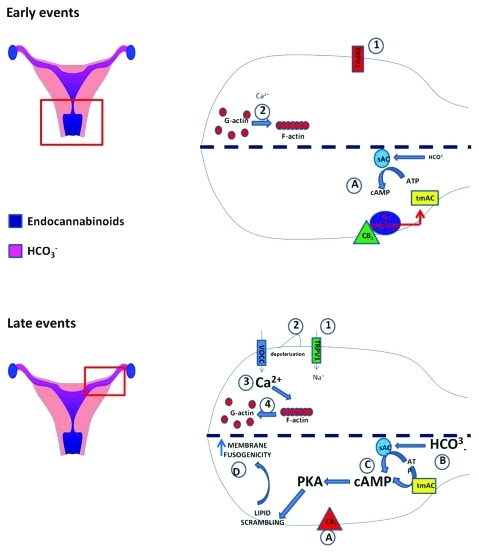Figure 1.
Immediately after ejaculation (early events) TRPV1 receptors are located in post-equatorial area and are functionally inactive (1). The slowly increasing [Ca2+]i allows G-actin polymerization, thus creating a diaphragm between PM and OAM (2). cAMP concentration is maintained at a low level by CB1 located in the post-equatorial area, which actively inhibits tmAC, and by a low intracellular concentration of bicarbonate (A). Progressively (late events) TRPV1 translocates in the acrosomal area and becomes active (1). Its opening triggers a membrane depolarization wave (2) and, as a consequence, the recruitment of VOCCs which, in turn, promote a dramatic increase in [Ca2+]i (3). The latter event causes a fast depolymerization of F-actin network (4), thus allowing the contact between PM and OAM. At the same time, CB1 migrates in the equatorial area and becomes inactive (A). This event, along with the markedly increased intracellular concentration of bicarbonate (B), promotes the rise in cAMP levels (C) that, via a PKA-dependent pathway, causes the activation of lipid scrambling and increases membrane fusogenicity (D).

